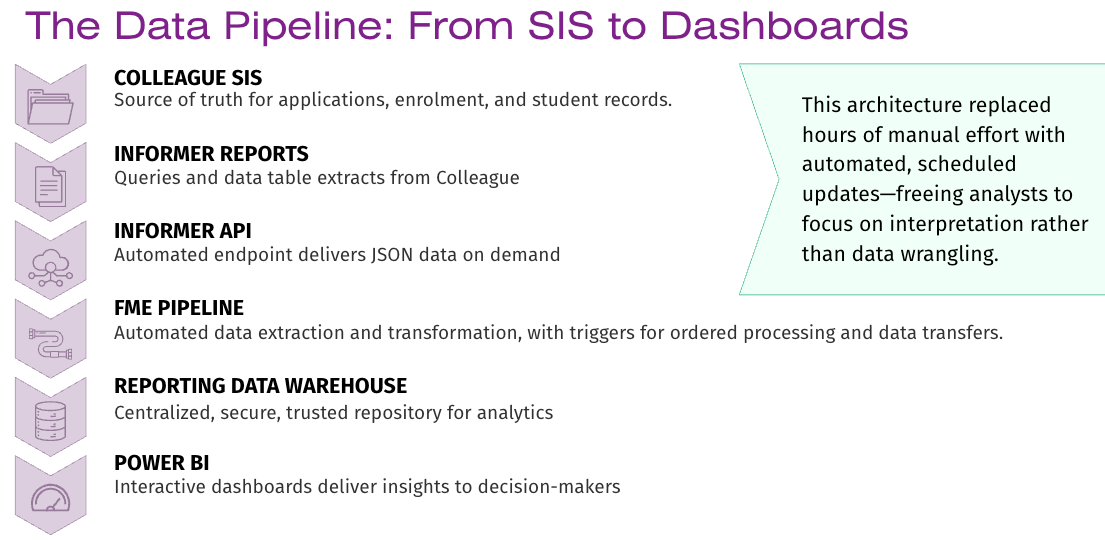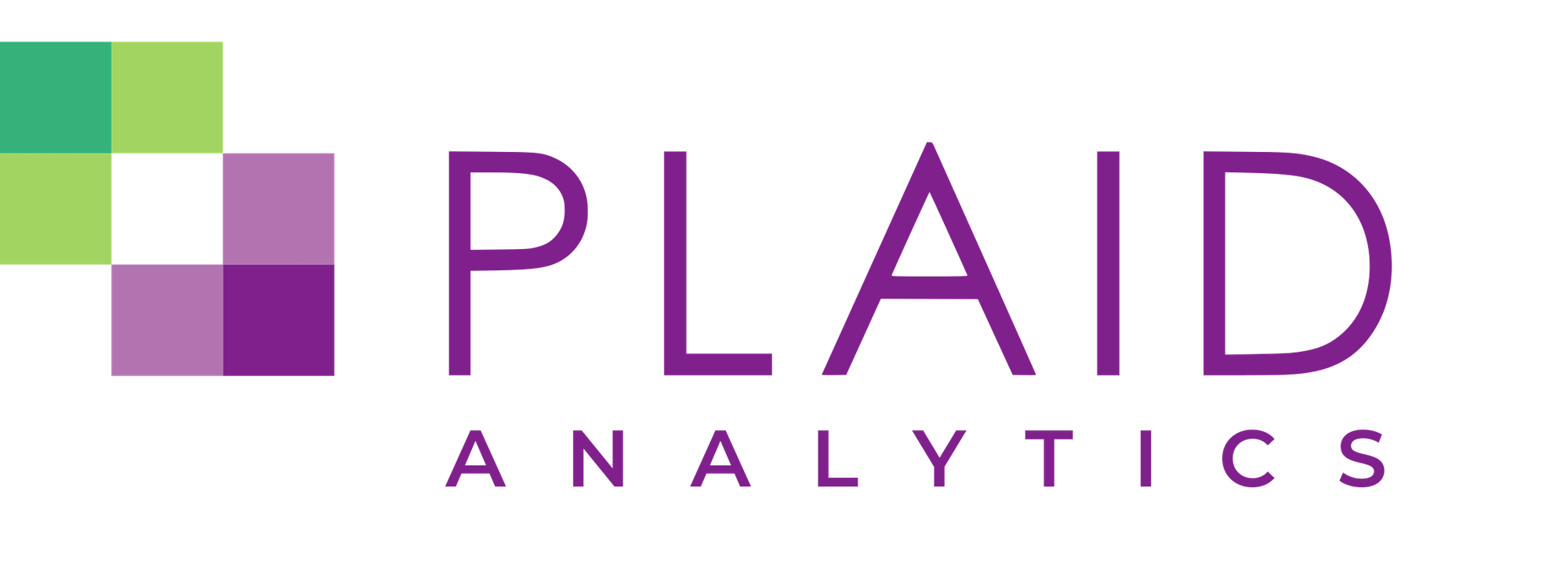2025 Fall Update

The 2025 federal budget brings new clarity - and new uncertainty - for Canadian postsecondary institutions navigating the ongoing recalibration of international enrolment. HESA has a good rundown of the wider postsecondary pieces in their Budget Commentary.
Ottawa’s 2025 budget confirms deeper cuts to new international study permits - down from 437,000 permits in 2025, to 155,000 in 2026, and 150,000 in 2027 and 2028. This sounds drastic, of course, but Canada also is trending at 60% below target for 2025, which works out to about 175,000 permits. From this perspective, the damage has already been done. However, we think there is a small amount of light for some institutions.

If you’re trying to keep up with the moving target and model impacts quickly, reply to this email or contact andrew@plaid.is.
New website, new ways to follow Plaid
If you're a regular visitor to the website or our blog, you've probably noticed we've made some changes. We've updated the website with new content, layouts, and subscription options. Previously, we only had one subscription option - the Newsletter. Now you can subscribe to the newsletter as well as subscribe specifically to the Plaid blog and get posts in your inbox as soon as they are published.
The "Subscribe" button on the top right of all our pages will subscribe you to the newsletter (like this one). But if you want more content, then navigate to the Blog page and hit the "Subscribe to the Plaid Blog" button. Or scroll to the bottom of any page and hit "Subscribe to the Blog" there.
We've imported our subscriber list to the new website and set you up already for the newsletter. If you're looking for more, hit the button below:
📣 Call for Survey Participants
Help shape national Identity and Access Management (IAM) support for Canadian higher-ed in less than 15 minutes.
Identity and Access Management is core infrastructure for Canada’s research and education ecosystem. IAM is foundational for enabling secure collaboration, federated services, and a seamless experience across campuses and worldwide.
Don't know what IAM is but want your institution's voice to be heard? Forward this link (https://at.plaid.is/iam-survey) on to your CIO, CISO, Privacy Officer, Data Governance, and IT teams.
CANARIE is exploring the potential to develop a national Identity & Access Management (IAM) Community of Practice for Canadian PSE. HESA and Plaid Analytics have been engaged to facilitate a national consultation to map current challenges, future needs, and the most useful ways to share practical guidance (think reference architectures, JML playbooks, federation/eduroam patterns).
Plaid Presents at CIRPA 2025: API's, Data Warehouses, and Dashboards
Pat Lougheed, Plaid C0-Founder, and Lena McCoy from Northern Lights College co-presented last week at the 2025 Canadian Institutional Research and Planning Association conference on Leveraging the Entrinsik Informer API to Power Data-Driven Decision Making.

The presentation focused on how automating data out of a live system (Informer) into a data warehouse set up specifically for reporting not only sped up report development, but sparked demand for more analytics and created institutional momentum for data governance, standardization, and proactive planning. If you're a CIRPA member, the session recording is still available on the conference website.
We'd like to thank the attendees for their engagement and questions. We ran out of time to answer them all live, but go to the bottom of this email to see the ones we missed and our responses.
🎓 Plaid partners with MortarCAPS
Plaid Analytics is now an Official MCDS Aligned Vendor
At Plaid, we're always focused on helping institutions use their data effectively. By aligning with the MortarCAPS Higher Learning Data Standard (MCDS) we'll continue to help our partners build evidence-based practices that improve outcomes for students and operations alike. Data warehousing and automation can help institutions weather budget challenges, enrolment reductions, and workforce constraints.
With quality data and a strategic reporting plan, Plaid helps institutions make timely decisions to be resilient in the present, and thriving in the future.
“We believe in helping institutions spend less time on plumbing and more time on insight. Joining MCDS supports that vision by giving our clients a shared framework for data that’s interoperable, open, and built for the future of higher education.”
— Andrew Drinkwater, Co-Founder and President, Plaid Analytics
Question & Anwer: CIRPA 2025 Presentation
Commonly asked questions about automating a data warehouse from a live data source like Ellucian College or Entrinsik Informer:
- Who is responsible for data governance, Plaid or the College? Data governance remains in the institutions control and we give you the workflows and training to ensure that you can expand and modify the automations and data warehouse as needed. You can also connect your data warehouse and workflows to a tool like Plaid Govern to capture your metadata information.
- Can the workflow handle multiple data dumps per day? Yes! The API takes much less processing power than running an Informer report directly. We've also built workflows with other clients that run once per hour, and we use FME tools that enable real-time integration.
- How are you going to adapt this approach when Colleague changes from on-premise to SaaS? Ellucian documentation suggests there will be API integration possible, so we expect NLC will just need to update the API connection in the workflow to the new address.
- How do you manage data quality when the extracts are automated? Automated workflows can be set up to produce quality and error reports, ingest crosswalk and mapping spreadsheets where you currently store permanent fixes to problematic records or manage custom groupings. Our data warehouses store all record changes, so data is never lost or overwritten and we set you up with a versioning system and development database so that you can investigate and test any fixes without interrupting or overwriting existing processes. This enables easier data quality investigations so you can test and identify data process changes that really work.
- How do I know when my office is ready for data warehousing or automation? If you spend most of your time doing repetitive tasks, like moving data from one place to another, updating a data set then pivoting it, or are doing point-in-time comparisons manually, you're ready. If you have a schedule where you run the same data extract but just adjust the dates to match the current cycle, you're ready. If you run the same calculations on the same fields across multiple reports, you're ready. If you use the same query to build the dataset for multiple ad hoc questions, you're ready. And if you're still not sure you're ready, we can help you get there.
Struggling to know how to make automated reporting a reality? Talk with us about where you're at, your existing tools, and we'll help you develop a realistic and achievable roadmap to get there.
